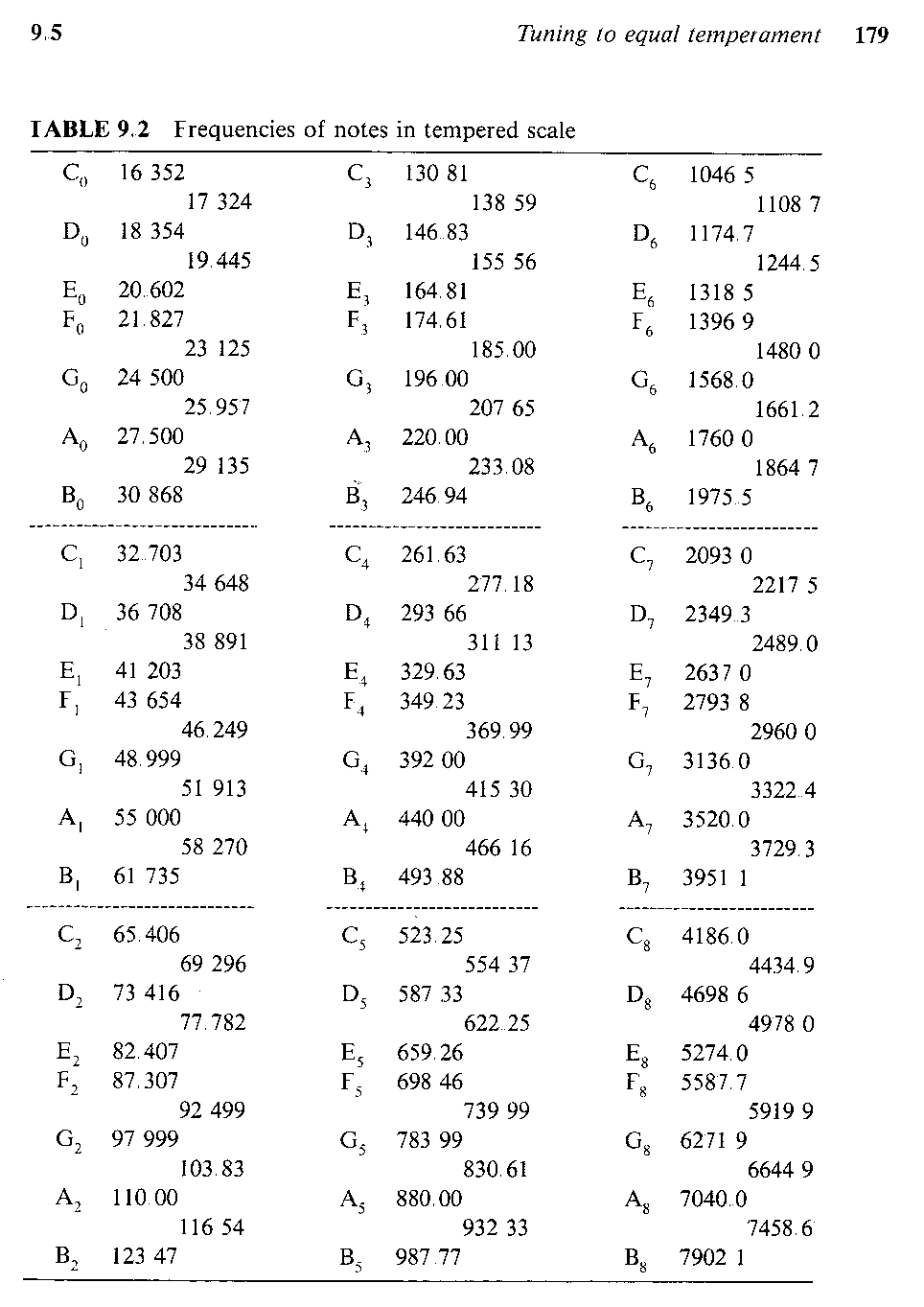
Several of you have asked for a brief summary of musical scales and their construction. Here it is.
"Just" Intonation refers to simple low-integer-ratio frequency ratios developed by the Ancient Greeks:
To assemble the just scale, note that the root major triad has frequencies in the ratios 1: 5/4 : 3/2, as are those of the dominant chord built on the 5th of the scale and the subdominant chord built on the 4th of the scale. Thus, for example, C-major would be rendered as
The "Just" Scale:
This sounds great for pieces in the key of C (or whatever note the scale is built upon) but the fifth between D and A is not in the ratio 3:2, and so sounds a bit sour (e.g., beats are produced). Moreover, as chords are played that add flats and sharps, the keys farthest from the home key sound more and more out of tune. You should know that choruses sing in "just intonation" in whatever home key they are currently singing.
One solution is to maximize the number of truly perfect 5ths (3:2 ratios); doing so leads to the Pythagorean scale. Starting on the home key tonic note (e.g., C), and going around the circle of fifths (transposing octaves where necessary), one finds that one does not return to the original note, but misses it by an amount known as the "Pythagorean comma" (equal to the ratio 1.0136). As with "just intonation," Pythagorean tuning sounds pretty good near the home key but the 3rds sound slightly too high or low and get worse the farther the key moves from home.
The Pythagorean Scale:
There are various schemes to adjust certain intervals slightly to make the Pythagorean scale sound closer to the "just" scale; these form the basis of various "meantone" tuning schemes. The most famous of these is to spread the Pythagorean comma evenly around all 12 intervals in the chromatic scale in equal proportions, effectively making every interval just slightly sour but none worse than any other.
The "equal-tempered" scale has each semitone equal to a ratio of the twelfth root of 2, or 1.05946. so a fifth is 1.05946 to the 7th power (seven semitones in a musical fifth) or 1.498 (slightly flatter than 3/2). With the note A4 defined at 440 Hz, the entire equal tempered chromatic scale can be shown to be (from Rossing's "The Science of Sound"):

The tuning of open strings for an electric guitar (or classical guitar) is E2 (82 Hz), A2 (110 Hz), D3 (147 Hz), G3 (196 Hz), and E4 (330 Hz), though the music is notated two octaves higher than it sounds (for readability). Middle C is C4 and the tuning note played in orchestras is A4.
|
Comments
or Questions? |
|
 |